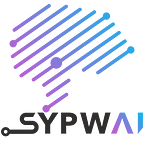Among AI trends, several very interesting development scenarios stand out this year. Among them is hyper-automation
It is hyper-automation that has been named first on this year’s list of technology trends. While automation has simply become commonplace, it is now about a more integrated use of different technologies that will increase efficiency.
Part of hyper-automation is robotic process automation (RPA), and it too is increasingly penetrating manufacturing: Forrester Research predicts the global RPA market will reach $7.7bn in 2020 and grow to $12bn in 2023.
Hyper-automation is also directly linked to the next trend — digital twins.
Industrial companies, like all companies in the world, have accounting, finance, and other back-office functions that have long been automated down to the smallest segments of operations. But automation at the shop-floor level has never been a simple process: the shop-floor often simply won’t accept new technology.
Digital twin technologies became possible when all bits and pieces of industrial processes (from product design to warranty tracking) began to be conducted on computers for extended periods. And economic feasibility gained with hyper-automation, i.e. the exclusion of humans where humans simply cannot physically cope with the tasks.
Such tasks include the individualization of car design for a narrow series when it is necessary not only to make standard calculations but also to check the ability of suppliers to provide production.
The biggest disincentive to mass transition to hyper-automation is the lack of trust in software, which pushes people out of routine tasks. It is not speeding up, leaving faults to be blamed, but eliminating them. Vendors of such systems are not prepared to take responsibility for possible damage to the customer’s business, and customers are reluctant to put their businesses under IT risks in which they are not experts.
